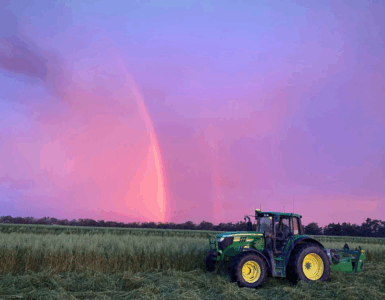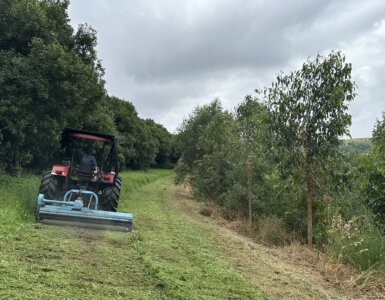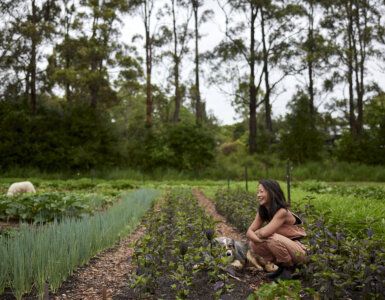How many commercial insect farmers have you met?
It’s pretty niche, but for a woman who always wanted to farm and couldn’t afford land or the costs associated with looking after big animals – it was perfect. These tiny creatures are packed with protein and serve as a valuable food source for farm animals and aquaculture.
But looking at the bigger picture, these bugs, specifically maggots, could be the solution to ending Australia’s food waste problem. The pioneering technology has earned Olympia Yarger the title of ACT Australian of the Year for her company Goterra.
Olympia says an insect farm surprisingly looks a lot like other farms except her animals are kept in climate controlled rooms. It consists of an aviary where the flies lay their eggs, incubators for those eggs and grow rooms where breeding stock are kept.
Those things are not unique. Where the uniqueness comes from is commercialising tech to harness that capability and making it more efficient so it can be used as a service.

Insect feedlot
Goterra’s key success has been creating an insect feedlot which is an autonomous machine that manages feeding and growing of the insects. There are two parts to the business, the insects are a valuable source of protein but they also consume food waste.
“Like any animal, they need food. Maggots are designed to consume waste. We waste a heck of a lot of food in Australia. It’s just going to landfill,” Olympia says.
They require five tonnes of food to make one tonne of live protein, so the potential is immense.
“Waste as a whole has been largely ignored. Recycling of things is well under what we need it to be. So, we’re in a pickle.”
Goterra’s units are mobile which makes the solution applicable to both urban areas and regional centres.
“We tend to focus on our metros because that’s where the people are. But that does not help or support any of your regional hubs or town centres which is often where manufacturing is happening,” Olympia explains.
She describes her units as easy to make, fast to deploy and crucial to the future of successful waste management.
The system is housed in a shipping container that’s climate controlled and filled with racks containing black soldier fly larvae. A robot moves the insects from their place in a tray up to a feeding station. So, the unit can be moved up to access a wheely bin or a commercial skip.

Maggots eat how much?
Don’t mistake the technology for a fancy worm farm though. Maggots eat five times their body weight every day and at the end of it, you only have manure and larvae remaining.
It’s a fast moving process that takes only 12 days. No other insect compares to those rates.
Once the process is complete, companies like aquaculture farms, pet food companies and chicken feed producers are purchasing the by-product for feed. That essentially is pelletised manure or microwaved insects.
The stats are there to back up this method. Since launching, Goterra has processed 35,000 tonnes of waste and saved more than 66,000 tonnes of carbon emissions. Companies like Woolworths, Lendlease and Cleanaway are already Goterra clients.

What’s next?
Unfortunately for Goterra, that’s just the start. Olympia has hit many hurdles along the way whilst trying to get the message out to others and to governments.
“I didn’t expect it to be so hard to get people to understand the waste industry and to fund it.”
Thankfully, once you meet Olympia, you will realise this climate action warrior, farmer and entrepreneur is more than up to the challenge that lies ahead, or should that be, flies ahead?
Hear more stories like this by subscribing to the Telling Our Story podcast on iTunes (or wherever you listen to podcasts) and follow podcast host Angie Asimus on Instagram for more updates.







































Add comment